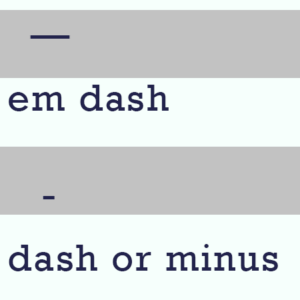If you come across this character — the em dash — in an article, there’s a 99% chance that the content was generated by artificial intelligence. Keep in mind that approximately 99.9999% of computer users are either unfamiliar with this punctuation mark or, even if they’ve seen it before, do not know how to produce it using a keyboard.
How is the em dash typed?
On most systems, you can insert an em dash in the following ways:
- Windows: Hold
Altand type0151on the numeric keypad →— - Mac: Press
Shift + Option + Hyphen→— - Microsoft Word: Type two hyphens (
--) and continue typing; Word often auto-replaces with an em dash - HTML: Use the entity
—→— - Unicode:
U+2014
In most casual writing, people either use a regular hyphen or two hyphens in place of the em dash simply because they are unaware of how to create the proper symbol.

Why Artificial Intelligence Loves the Em Dash
In the evolving world of artificial intelligence, there’s a subtle yet interesting pattern that shows up in AI-generated writing — the frequent and enthusiastic use of the em dash. This long dash (—), often used to indicate breaks in thought, emphasis, or additional information, seems to have become a favorite punctuation mark of many large language models. Unlike traditional grammar purists who reserve it for specific cases, AIs tend to sprinkle em dashes generously throughout their texts.
But why the obsession with the em dash? One reason may be that it offers flexibility — something AI models inherently seek when generating natural-sounding language. The em dash allows sentences to flow without the rigidity of commas or parentheses, offering smoother transitions and a conversational tone. It mimics the rhythm of human speech, giving the text a dynamic feel that feels more alive and engaging. For language models trained on vast corpora of human writing, this adaptable punctuation is a stylistic shortcut to sounding fluent, casual, and even a bit dramatic.
Of course, this habit isn’t without its critics. Some readers and editors find AI’s overuse of the em dash excessive or stylistically lazy. Still, it’s an amusing insight into how AIs prioritize readability and rhythm over strict grammar rules. Whether it’s a quirk of training data or a reflection of modern writing trends, one thing is clear: when artificial intelligence picks a favorite punctuation mark, it picks the em dash — every time.